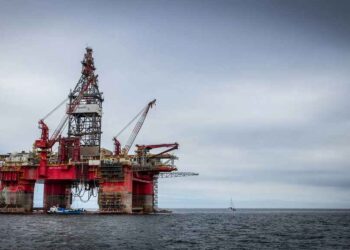The Hubline / East to West Expansion Project includes expansion of an interstate natural gas pipeline passing through Connecticut and New Jersey. The project is being developed by the pipeline’s owner Algonquin Gas Transmission, a subsidiary of Spectra Energy Transmission.
Algonquin uses the pipeline and associated facilities to transport natural gas from the east end of the system for shipping to customers in the north-east markets of the US. To meet the increasing demand for natural gas from the customers in these markets, Algonquin decided to increase the capacity by replacing a section of the pipeline with a higher diameter pipe.
The expansion will also involve installation of aboveground facilities and upgrade of a compressor station. The project has to comply with the National Environmental Policy Act.
The Federal Energy Regulatory Commission (FERC), the US Army Corps of Engineers and the US Environmental Protection Agency assessed the environmental impact of, and approved the project, suggesting a few mitigating measures.
Construction is expected to be completed by November 2010.
Pipeline route
The interstate pipeline proposed to be expanded passes through four states including Massachusetts, Connecticut, Rhode Island and New Jersey.
“A draft Environmental Impact Statement was issued by FERC in November 2008.”
Output
- Algonquin saw demand for 746.5m cubic feet of gas from the shippers during the project’s Open Season that was completed in March 2007.
- The company filed an application with the Federal Energy Regulatory Commission (FERC) in June 2008, seeking the approval of the project based on this capacity. A draft Environmental Impact Statement was issued by FERC in November 2008.
- The initial requirement proposed by shippers, however, came down to 281.5m cubic feet due to unfavourable market conditions. Algonquin, therefore, submitted an amended application to FERC, incorporating lower capacity. FERC issued the final EIS on the project in September 2009, based on the revised capacity.
- The project will, therefore, increase the pipeline’s daily output by 281.5m cubic feet of gas.
Offshore
The additional gas that will be supplied by the expanded pipeline will be sourced from LNG projects off the shore of Massachusetts, which lies at the east end of the pipeline.
Construction and infrastructure
The natural gas supply pipeline, which is to be expanded, passes through New London County at Norwich in Connecticut and is six inches in diameter. As part of the expansion, Algonquin will replace 2.56 miles of this pipeline by a new pipeline of 12in diameter. The project will also include modification of a compressor station at Hanover in New Jersey. Reverse flow and backhaul capabilities will be added to the compressor station.
“The initial proposal of Algonquin, however, included a bigger project scope.”
The pipeline replacement will be carried out using either the lift-and-replace or the same-ditch-replacement methods. The first step in these methods is to remove the existing pipeline by excavating a trench. In the second step, the trench is made bigger to accommodate the larger-diameter pipeline. The final step involves installation of the new replacement pipe using cross-country construction methods.
Alternatively, the trench may also be backfilled after removing the old pipe. In this case retrenching is carried out to install the new pipe.
FERC has suggested Algonquin to limit the nominal construction right-of-way to 75ft width during construction so as to reduce the environmental impact.
The above ground facilities to be installed include a mainline valve, remote blow-off valve and a mainline remote control valve. A pig launcher and a pig receiver will also be installed. All the proposed above ground facilities are located either at the beginning or at the end of the pipeline route. The expansion will require less than 0.2 acres of new permanent right-of-way.
The initial proposal of Algonquin, however, included a bigger project scope. The proposal included construction of a new compressor station in Massachusetts and the upgrade of three existing compressor stations in Rhode Island, Connecticut and New Jersey. Two new regulator stations were planned to be installed in Massachusetts. The scope has now been reduced due to the capacity reduction.

















































